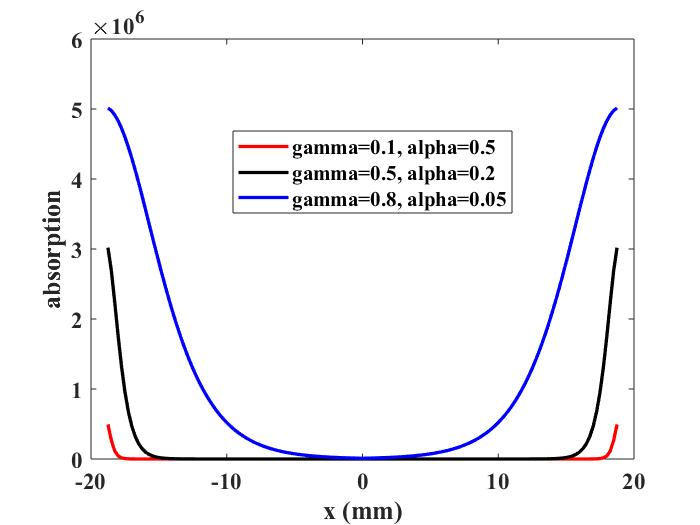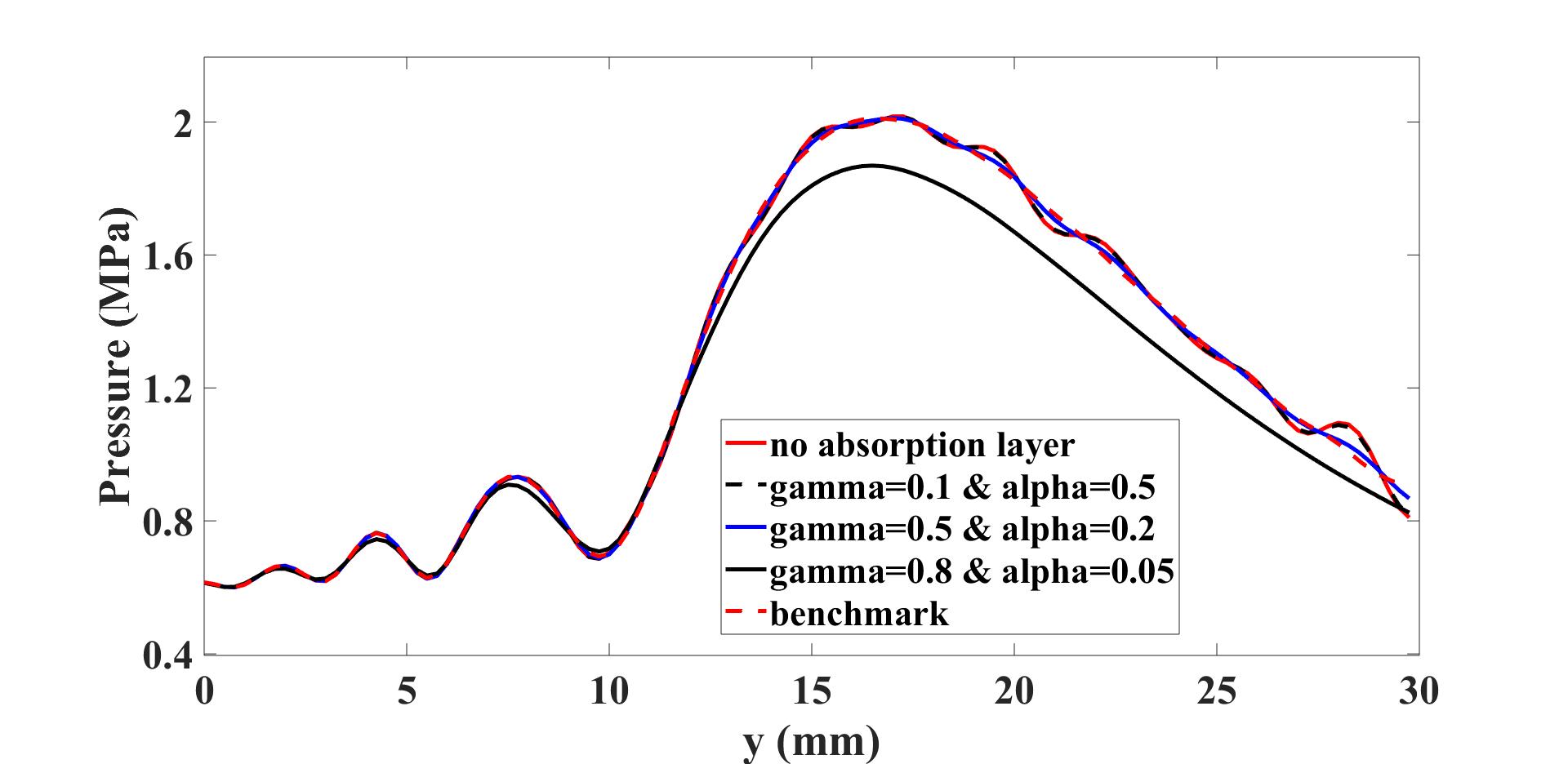Reducing the spatial aliasing error using the non-reflecting layer
Adding non-reflecting layers can help reduce the spatial aliasing error by absorbing the energy at the boundaries. It must be noted that the acoustic field will become inaccurate if the absorption is set to be too strong. On the other hand, the spatial aliasing error cannot be significantly reduced if the absorption is too small. There is, therefore, a tradeoff. In this example, the effect of the non-reflecting layer is investigated by using different medium.NRL_gamma and medium.NRL_alpha.
2D forward simulation
This simulation setup is based on the Simulation of a 2D homogeneous medium using the frequency-specific mixed domain method. Computational domain and simulation setup are the same in the two examples. In this example, three pairs of medium.NRL_gamma and medium.NRL_alpha are studied and they are: medium.NRL_gamma=0.1 and medium.NRLb_alpha=0.5, medium.NRL_gamma=0.5 and medium.NRL_alpha=0.2, and medium.NRL_gamma=0.8 and medium.NRL_alpha=0.05. In the first figure, we show the absorption coefficient profiles along the transverse direction. "M_gamma" in Forward2D_fund is plotted. When medium.NRL_gamma=0.1 and medium.NRLb_alpha=0.5, absorption is too small to reduce the artifical reflections from the boundary. When medium.NRL_gamma=0.8 and medium.NRL_alpha=0.05, absorption is too strong and will give inaccurate acoustic field. The pressure distributions along the central axis with different absorption layer configurations are shown in the second figure below.
% forward propagation of the fundamental pressure
P_fundamental = Forward2D_fund(mgrid, medium, excit_p, omega_c, 0, 'NRL');
The axial pressure distributions for different
medium.NRL_gamma and medium.NRLb_alpha
values are shown below. The benchmark is generated by using a sufficiently large computational domain. The spatial aliasing errors
are manifested as the oscillations in the pressure distributions, which is minimized by using
medium.NRL_gamma=0.5 and medium.NRL_alpha=0.2.
Using
medium.NRL_gamma=0.8 and medium.NRL_alpha=0.05
also reduces the spatial aliasing error. However, the comparison with the benchmark suggests that the acoustic field is
inaccurate due to the excessive absorption.


Other examples
·
Simulation of a 2D homogeneous medium using the transient mixed domain method
·
Simulation of a 2D heterogeneous medium using the transient mixed domain method
·
Simulation of a strongly 2D heterogeneous medium using the transient mixed domain method
·
Simulation of a 3D homogeneous medium using the transient mixed domain method
·
Selecting the proper temporal domain size for the TMDM
·
Shock wave simulations with TMDM
·
Simulation of a 2D homogeneous medium using the frequency-specific mixed domain method
·
Simulation of a 2D heterogeneous medium using the frequency-specific mixed domain method
·
Simulation of a 3D homogeneous medium using the frequency-specific mixed domain method
·
Simulation of a 3D heterogeneous medium using the frequency-specific mixed domain method
·
Reducing the spatial aliasing error using the non-reflecting layer
·
Comparing pressure release and rigid boundary conditions
·
Image reconstruction using backward projection
·
Reconstruction of the source pressure distribution with FSMDM in a 3D homogeneous medium
·
Integrating mSOUND with k-Wave for transducers of arbitrary shape
·
Integrating mSOUND with FOCUS for transducers of arbitrary shape
·
Integrating mSOUND with k-Wave for thermal simulations
